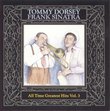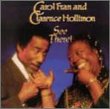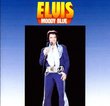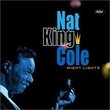| All Artists: Thelonious Monk Title: Complete Albums Collection: 1957-1961 Members Wishing: 5 Total Copies: 0 Label: ENLIGHTENMENT Release Date: 10/16/2015 Album Type: Import Genres: Jazz, Pop, Rock Style: Number of Discs: 5 SwapaCD Credits: 5 UPC: 823564660929 |
Search - Thelonious Monk :: Complete Albums Collection: 1957-1961
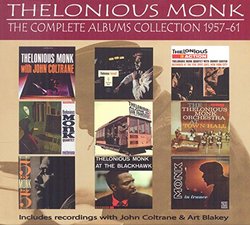 | Thelonious Monk Complete Albums Collection: 1957-1961 Genres: Jazz, Pop, Rock
As the 1950s drew to a close, Monk's relationship with Riverside was beginning to sour over disagreements concerning royalty payments. He would not record another studio album for Riverside after 5 by Monk by 5, and a sign... more » |
Larger Image |
CD Details
Synopsis
Product Description
As the 1950s drew to a close, Monk's relationship with Riverside was beginning to sour over disagreements concerning royalty payments. He would not record another studio album for Riverside after 5 by Monk by 5, and a significant number of live albums followed, which showcased a variety of legendary performances across the USA, France and Italy. In 1962, Monk signed to Columbia Records. Working with producer Teo Macero on his debut for the label, the sessions in the first week of November had a stable line-up that had been with him for two years, Monk's Dream, was released in 1963. Columbia's resources allowed Monk to be promoted more heavily than earlier in his career. The album would become the best-selling LP of his lifetime, and on February 28, 1964, he appeared on the cover of Time magazine, being featured in the article The Loneliest Monk. He continued to record studio albums, including Criss Cross, also from 1963, and Underground, from 1968. Monk had disappeared from the scene by the mid-1970s, and made only a small number of appearances during the final decade of his life. His last studio recordings as a leader were made in November 1971 for the English Black Lion label, near the end of a worldwide tour with the Giants of Jazz, a group which included Dizzy Gillespie, Kai Winding, Sonny Stitt, Al McKibbon and Art Blakey. The Thelonious Monk Institute of Jazz was established in 1986 by the Monk family and Maria Fisher. Its mission to offer public school-based jazz education programs for young people around the globe, helping students develop imaginative thinking, creativity, curiosity, a positive self-image, and a respect for their own and others' cultural heritage. In addition to hosting an annual International Jazz Competition since 1987, the Institute also recently helped, through its partnership with UNESCO, designate April 30, 2012, as the first annual International Jazz Day. Monk was inducted into the North Carolina Music Hall of Fame in 2009.
Similarly Requested CDs
| Tommy Dorsey, Frank Sinatra All Time Greatest Hits 3 Genres: Jazz, Pop, Broadway & Vocalists Label: RCA | |
| Frank Sinatra, Sextet Live in Paris Genres: Jazz, Pop, Broadway & Vocalists Label: Warner Bros / Wea | |
| Carol Fran, Clarence Hollimon See There Genres: Blues, Pop Label: Black Top Records | |
| Elvis Presley Moody Blue Genres: Pop, Rock Label: RCA | |
| Nat King Cole Night Lights Genres: Jazz, Pop, Broadway & Vocalists Label: Capitol | |
| Blake Shelton Blake Shelton Genres: Country, Pop Label: Warner Bros / Wea | |
| Lonestar From There to Here: Greatest Hits Genres: Country, Pop Label: Bna Entertainment | |
| Bruce Springsteen Essential Genres: Folk, Pop, Rock, Classic Rock Label: Columbia | |

 Track Listings (14) - Disc #1
Track Listings (14) - Disc #1
